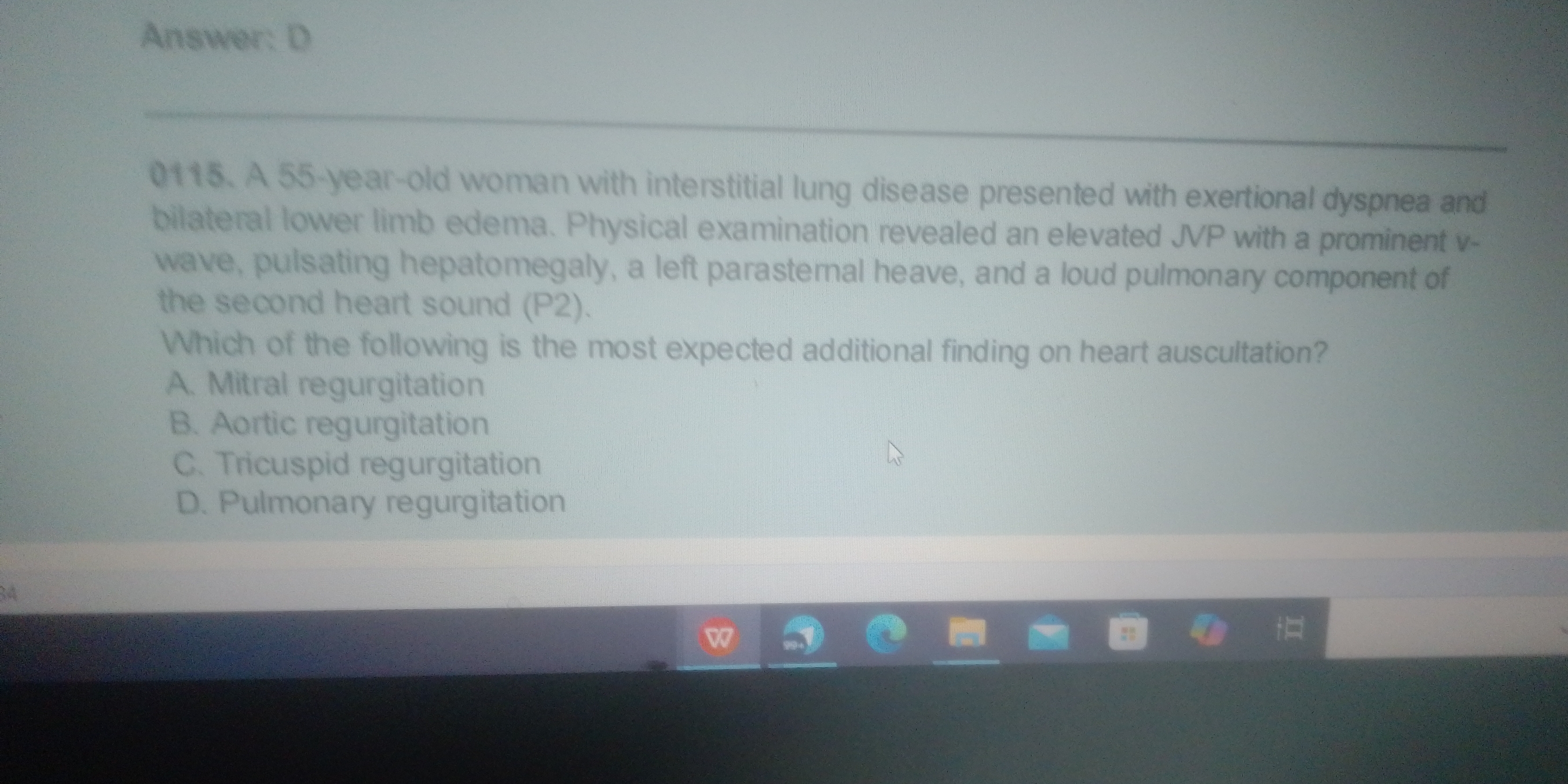A 55-year-old woman with interstitial lung disease presented with exertional dyspnea and bilateral lower limb edema. Physical examination revealed an elevated JVP with a prominent... A 55-year-old woman with interstitial lung disease presented with exertional dyspnea and bilateral lower limb edema. Physical examination revealed an elevated JVP with a prominent v-wave, pulsating hepatomegaly, a left parasternal heave, and a loud pulmonary component of the second heart sound (P2). Which of the following is the most expected additional finding on heart auscultation? A. Mitral regurgitation B. Aortic regurgitation C. Tricuspid regurgitation D. Pulmonary regurgitation

Understand the Problem
The question is asking for the expected additional finding during heart auscultation for a patient with specific symptoms related to interstitial lung disease and signs of elevated jugular venous pressure (JVP). It requires knowledge of cardiac auscultation findings associated with heart conditions.
Answer
Tricuspid regurgitation
The most expected finding is tricuspid regurgitation.
Answer for screen readers
The most expected finding is tricuspid regurgitation.
More Information
The prominent v-wave in the jugular venous pulse (JVP) and loud P2 indicate pulmonary hypertension, commonly leading to right ventricular enlargement and tricuspid regurgitation.
Tips
A common mistake is confusing heart sounds associated with left-sided heart issues with symptoms of right heart failure.
Sources
- Right Ventricular Hypertrophy - StatPearls - NCBI Bookshelf - ncbi.nlm.nih.gov
AI-generated content may contain errors. Please verify critical information